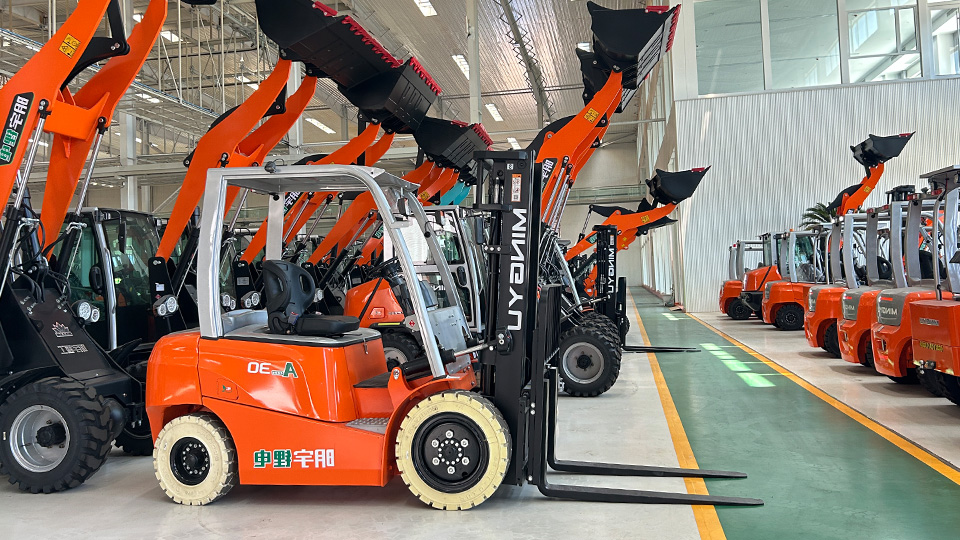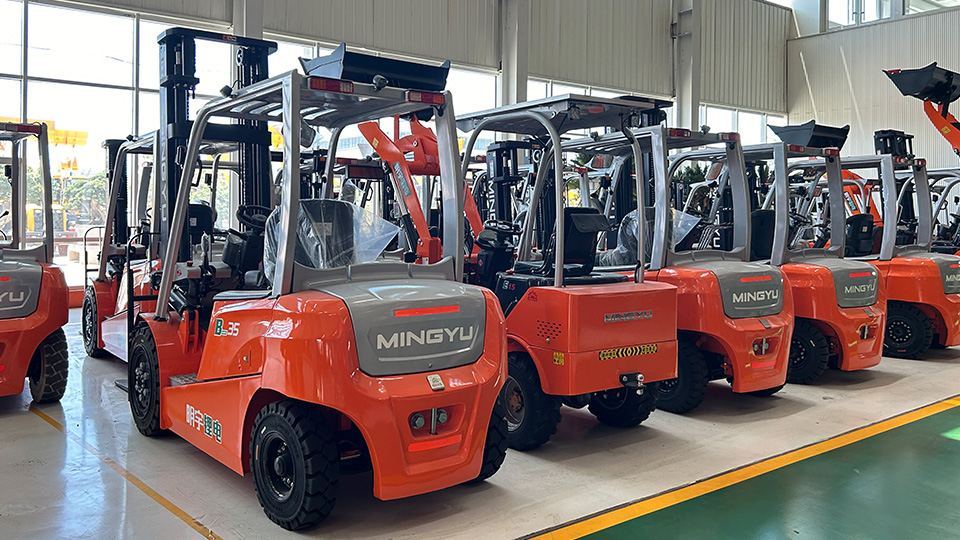
Understanding the Duration of Forklift Training Programs
Forklifts are indispensable machines in a wide array of industries, from warehousing and manufacturing to construction and logistics. Their ability to lift and transport heavy loads efficiently makes them critical for productivity. However, operating these powerful machines safely requires specialized knowledge and practical skills. This is where forklift training comes into play. A common question among individuals and businesses considering such training is: "How long does a forklift course take?"
The answer to this seemingly simple question is multifaceted, as the duration of a forklift course can vary significantly depending on several factors. This comprehensive technical article will delve into the typical timeframes for different types of forklift training, explore the variables that influence course length, and discuss the critical components that make up a robust forklift certification program.
The Core Components of Forklift Training
Before we discuss the duration, it's crucial to understand what a comprehensive forklift training course typically entails. Most reputable programs adhere to regulatory standards set by bodies such as the Occupational Safety and Health Administration (OSHA) in the United States, or similar regulatory bodies in other countries (e.g., Health and Safety Executive (HSE) in the UK, WorkSafeBC in Canada). These standards generally mandate both theoretical and practical components.
Classroom/Theoretical Instruction: This portion of the training focuses on the foundational knowledge required for safe forklift operation. Topics typically covered include:
Forklift stability principles (load centers, stability triangles)
Pre-operational inspections (daily checks)
Operating procedures (starting, stopping, turning, lifting, lowering)
Safe load handling techniques
Workplace hazards (pedestrians, confined spaces, ramps)
Battery charging and refueling procedures

Maintenance requirements
Relevant safety regulations and standards
Understanding data plates and warning labels
Practical/Hands-On Training: This is where trainees apply the theoretical knowledge in a controlled environment. Under the supervision of a certified instructor, participants learn to:
Perform pre-operational inspections
Maneuver the forklift through various obstacles
Pick up, transport, and deposit loads safely
Stack and de-stack materials
Navigate ramps and inclines
Handle different types of loads and attachments
Practice emergency procedures
Evaluation/Testing: At the end of both the theoretical and practical training, trainees are assessed to ensure competency. This typically involves:
A written or oral examination to test theoretical knowledge.
A practical operating test to assess hands-on skills and safe operating habits.
Typical Durations for Forklift Courses
The length of a forklift course can range from a few hours to several days, primarily depending on the trainee's prior experience and the specific type of training being sought.
1. Initial Operator Training (for Novices):
This is designed for individuals with little to no prior experience operating a forklift. It is the most comprehensive type of training.
Typical Duration: 16 to 24 hours (2 to 3 full days).
Breakdown:
Classroom/Theoretical: 8-12 hours. This covers all the fundamental principles, safety regulations, and operational guidelines in detail.
Practical/Hands-On: 8-12 hours. This provides ample time for trainees to gain proficiency in maneuvering, load handling, and navigating various scenarios under direct supervision.
Evaluation: Included within the practical training time, or a dedicated session at the end.
This duration allows for thorough instruction and sufficient practice to develop the necessary skills and confidence for safe operation.
2. Refresher Training/Recertification:
OSHA and similar regulatory bodies generally require operators to undergo refresher training periodically (typically every three years) or when certain events occur (e.g., an accident, near-miss, observed unsafe operation, or a change in the type of forklift used).
Typical Duration: 4 to 8 hours (half to one full day).
Breakdown:
Classroom/Theoretical: 2-4 hours. This reviews key safety principles, any updated regulations, and common pitfalls. It often includes a question-and-answer session to address specific concerns or incidents.
Practical/Hands-On: 2-4 hours. This focuses on reinforcing good operating habits and correcting any bad ones that may have developed. It often includes a practical skills assessment.
Evaluation: A quick review or practical test is usually integrated.
Refresher training is shorter because operators already possess foundational knowledge and experience. The goal is to reinforce best practices and address any deficiencies.
3. Specific Equipment Training/Attachment Training:
When an operator is transitioning to a different type of forklift (e.g., from a sit-down counterbalanced forklift to a reach truck or order picker), or when new attachments are introduced, additional training is required.
Typical Duration: 4 to 12 hours (half to one and a half days), depending on the complexity of the new equipment or attachment.

Breakdown: This training focuses specifically on the unique characteristics, controls, and operating procedures of the new equipment or attachment, along with practical application.
4. On-the-Job Training (OJT):
While not a standalone certification, OJT is a crucial component often integrated after formal training, especially for new operators. This is where the newly certified operator applies their skills in their specific work environment under the direct supervision of an experienced and authorized person.
Duration: Varies significantly (from a few days to several weeks), depending on the complexity of the work environment, the variety of tasks, and the individual's learning pace.
Purpose: To familiarize the operator with the specific hazards, traffic patterns, load types, and operational procedures unique to their workplace. OSHA regulations emphasize that even after formal training, an operator must be evaluated in their actual working environment.
Factors Influencing Course Duration
Several key factors can influence how long a forklift course takes:
Trainee's Prior Experience: As discussed, novice operators require significantly more time than experienced ones undergoing refresher training. An individual with some prior, but uncertified, experience might bridge the gap between a full initial course and a refresher, but a complete initial course is still typically recommended for proper certification.
Type of Forklift: There are numerous types of forklifts, each with distinct operating characteristics.
Counterbalanced Forklifts (Sit-down/Stand-up): The most common type, often the focus of initial training.
Reach Trucks: Designed for narrow aisles and high-reach applications, requiring more precise maneuvering.
Order Pickers: Used for picking individual items from racks, often involving elevated platforms.
Pallet Jacks (Powered): Simpler to operate but still require training due to potential hazards
Rough Terrain Forklifts: Designed for outdoor, uneven surfaces, often found on construction sites.
Telehandlers: Versatile machines with a telescoping boom, combining features of a forklift and a crane.
Training on specialized or more complex equipment will generally take longer than training on a basic counterbalanced forklift. Some training providers offer "lift truck operator" courses that cover multiple classes of forklifts, which will naturally extend the duration.
Instructor-to-Trainee Ratio: A lower ratio (e.g., 1 instructor to 4 trainees) allows for more personalized attention and hands-on time, potentially leading to more efficient learning and sometimes a slightly shorter overall duration for the practical component. A higher ratio might necessitate more waiting time for practical turns, extending the overall course.
Training Facility and Equipment: The quality and availability of the training facility and forklifts can impact the course length. A well-equipped facility with ample space and a variety of operational forklifts allows for more realistic and varied practical exercises, potentially streamlining the hands-on learning process.
Regulatory Requirements: The specific regulations in a given jurisdiction dictate the minimum content and evaluation criteria for forklift training, which directly impacts the course length. Reputable training providers always meet or exceed these minimum requirements.
Course Customization: Some employers opt for customized training programs tailored to their specific workplace hazards, types of loads, and operational procedures. While highly beneficial, customization can sometimes add to the course duration, especially if it involves extensive on-site assessment and tailored practical exercises.
Trainee's Learning Pace and Aptitude: Individuals learn at different speeds. While training programs have typical durations, some trainees may require additional time for practice or review to reach the required competency level, especially in the practical operating component.
The Importance of Proper Certification
Regardless of how long a forklift course takes, the ultimate goal is proper certification. This signifies that the operator has demonstrated the theoretical knowledge and practical skills necessary to operate a forklift safely and efficiently.
Safety: The primary benefit of certification is enhanced safety. Trained operators are less likely to be involved in accidents, injuries, or property damage. They understand the risks, know how to mitigate them, and react appropriately in emergencies.
Compliance: OSHA and similar regulatory bodies require that all forklift operators be trained and certified. Non-compliance can lead to hefty fines, legal liabilities, and a compromised safety record.
Productivity: While initial training takes time, certified operators are generally more efficient and productive. They handle loads correctly, minimize damage to goods and equipment, and contribute to smoother operations.
Reduced Costs: Fewer accidents mean reduced costs associated with repairs, medical expenses, workers' compensation claims, and lost productivity.
Professionalism: Certification demonstrates a commitment to professionalism and safety, benefiting both the individual operator and the employer.
Choosing a Training Provider
When selecting a forklift training provider, consider the following:
Accreditation and Compliance: Ensure the provider's curriculum meets or exceeds relevant regulatory standards (e.g., OSHA, ANSI, CSA).
Instructor Qualifications: Verify that instructors are experienced, certified, and knowledgeable in both forklift operation and adult education principles.
Facility and Equipment: Look for a well-maintained facility with modern, operational forklifts representative of those used in your industry.
Curriculum Depth: A good course will cover both theoretical and practical aspects thoroughly, not just the bare minimum.
Reputation and Reviews: Check testimonials and references from previous clients.
Flexibility: Some providers offer on-site training or flexible scheduling to accommodate business needs.
Conclusion
In conclusion, the duration of a forklift course is not a fixed number but rather a variable influenced by the trainee's experience, the type of forklift, regulatory requirements, and the quality of the training program. While initial certification for a novice operator typically spans 2 to 3 days, refresher courses are much shorter, usually taking half to a full day. Specialized equipment or attachment training adds further time.
Investing in comprehensive forklift training, regardless of its duration, is not merely a regulatory obligation; it is a critical investment in safety, productivity, and the overall well-being of a workforce. A well-trained forklift operator is a valuable asset, contributing to a safer, more efficient, and ultimately more profitable operation. Therefore, when asking "how long does a forklift course take," the focus should shift from merely the clock to the quality and thoroughness of the training provided, ensuring that operators are truly competent and confident in their vital role.
Name: selena
Mobile:+86-13176910558
Tel:+86-0535-2090977
Whatsapp:8613181602336
Email:vip@mingyuforklift.com
Add:Xiaqiu Town, Laizhou, Yantai City, Shandong Province, China